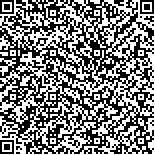| 摘要: |
| 新冠肺炎在全球的肆虐极大地影响了
人类的生活,而这也是对历史上的重大疫情与
城市医疗空间之间的关系作深刻反思的契机。
对于该“反思”,文章以“图解”的方法和福柯
权力空间的理论为视角来考察流行病下空间实
践的演化。首先,文章介绍了图解理论。而后,
逐步将其带入流行病的语境中并生成“流行病
图解”。随后,根据福柯对西方历史上最具标
志性的三次流行病——“麻风病”、“黑死病”
和“天花”——的哲思为起点,总结出了三种
关于流行病的图解和空间实践,分别为“驱
逐”(exclusion)、“内化”(inclusion)和“常
规化”(normalization)。作者认为,历史化地
看待疫情与空间实践不仅能更好地尊重人的需
求,还能进一步扩展医疗空间研究的理论视野,
为实践提供源源不断的动力。 |
| 关键词: 历史化 流行病 图解 米歇尔·福柯 空间实践 新冠肺炎 |
| DOI:10.13791/j.cnki.hsfwest.20220107 |
| 分类号: |
| 基金项目:国家自然科学基金资助项目(51778425) |
|
| Historicizing the Thinking of the Pandemic: Diagrams of Spatial Practice UnderPandemics |
|
QIAN Feng,LUO Yuansheng
|
| Abstract: |
| The global ravage of the Coronavirus has dramatically influenced the life of mankind,
but this is also an opportunity for scholars to reflect in-depth on the relations between major
pandemic and urban medical spatial practice of the past. The authors apply Foucault’s theory
on power-space interaction as the perspective to investigate the evolution of the spatial practice
under pandemics from the age of classic until now. Its purpose is to broaden the discourse of
architectural theory and connect it with urban, social, moral, and political factors. The article
consequently elaborates the following three issues. Firstly, it introduces the methodology
“diagram”, and gradually brings it into the context of pandemics, then generates the “pandemic
diagrams”. Secondly, drawing on Foucault’s philosophical discourse on the three most iconic
pandemics in Western history—leprosy, plague and smallpox—as the theoretical framework,
three corresponding diagrams and spatial practice studies are then carried out. They are exclusion,
inclusion, and normalization. By historicizing the reflections of epidemics and spatial practice in
history, as the authors argue, not only will it be beneficial to human needs, but also will further
expand the theoretical horizons of medical space research and provide a constant impetus for
practice.
While pandemics have been an important driving force in the evolution of architecture and
urban space, research in the fields of epidemiological history and spatial practice remains almost
parallel today. Since the father of epidemiology, John Snow(1813-1858), effectively controlled
the cholera outbreak in Soho (London) in 1854 by mapping water sources to the sources of
infection, the intersection of these two research lines has mostly focused on spatial epidemiology
represented by “disease mapping”, which aims to represent the spatial-temporal variation of
infectious diseases on a map. As such, much of the current discussion on the relationship between
pandemics and spatial practices aims to enumerate and explain the measures and implications
of disease controls. However, it is of great essential to clarify and structuralize the concept of
“spatial practice under pandemics” in order to understand the unequal relations, disruptions and
inefficiencies of urban lives caused by pandemics.
Unlike drawings, which are objective depictions of things, “diagram” refers to the
symbolic representation of information in a visual way, and is, therefore, more suited to a profound exploration of nature, development, and laws of things. In Discipline and Punish: The Birth of The Prison(1975), Foucault paradigmatically
summarized three pandemics in history: “leprosy” in the bible, the medieval and modern European “plague” and the nineteenth-century “smallpox”.
Foucault then explained these three paradigms respectively in terms of political power: sovereign or juridical power, disciplinary power and the power
of biopolitics. This article does not put emphasis on the historical evidence of these three pandemics, but sees them as a concept of reflection and
practice, and expresses them as modes of being or political technologies, so that there will be more room for theoretical operation and criticism, and
thus for diagramming as well.
The first spatial practice is “exclusion”, which corresponded to the power model of the sovereign or the law. It is represented by the spatial
practice of patient isolation, which had existed already in the era of ancient Rome, such as the temple of Asclepius on Tiber Island during the epidemic
of 293 B.C. With time evolving, the segregation of patients at the architectural level was also made very subtle, as this article illustrates in detail with
the example of a medieval leprosarium. The second spatial practice is “inclusion”, by which Foucault means the uniform codification and management
of patients, corresponding to the power model of discipline. In Foucault’s context, inclusion refers to the model of plague combat from the Middle Ages
to the modern era. This article takes the example of the late medieval Black Death asylums and the modern insane asylum to expound how the measure
of inclusion manifested itself in power as the social discipline of patients. The modern insane asylum plays the role of a “disciplined hospital”, which
also express itself in a duality: highly responsible for surveillance on one hand, without neglecting respect to humanity on the other. The third spatial
practice is that of “prevention and prevention-treatment”, which corresponds to a diagrammatic model of “normalization”, with a mode of power that is
internalized as the “biopolitics” and externalized as the trend of “globalization” in epidemics resistance. For the prevention, the authors think the most
scientific way to prevent the spread of disease is to understand its principles by experiment and then to treat it according to the experimental results,
that is the logic of “evidence-based design (EBD)”. Living in an increasingly unpredictable world with the global epidemiological crisis now and forth,
the authors suggest, for the “prevention-treatment” spatial practice, it is of great essence to strengthen the emergency response of the medical space and
to make use of modern construction techniques and medical measures. |
| Key words: Historicize Pandemic Diagram Michel Foucault Spatial Practice Covid-19 |


